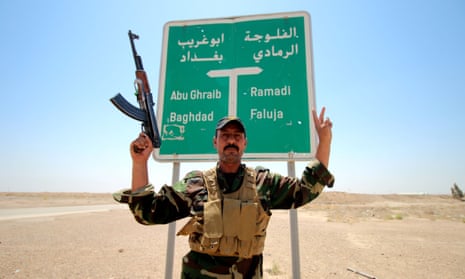The Islamic State group is now more centralised in Iraq and lost more than 7,000 fighters and leaders over the past year, according to an Australian defence chief.
Vice admiral David Johnston, Australia’s chief of joint operations, told reporters in Canberra on Wednesday the situation had changed and progress was being made.
Isis was spending most of its effort trying to hold ground rather than take new areas, he said. Around Ramadi, where an Iraqi government counter-attack started in mid-July, Isis no longer had the same freedom of manoeuvre.
“What we are seeing is that instead of moving forward or going on the offensive, they are often forced to be defensive and to try and slow down and delay Iraqi forces,” Johnston said.
Elsewhere, Australian jet fighters had successfully “removed” a key Isis leader in Anbar province, causing significant disruption and degradation to the group’s offensive operations.

Comments (…)
Sign in or create your Guardian account to join the discussion